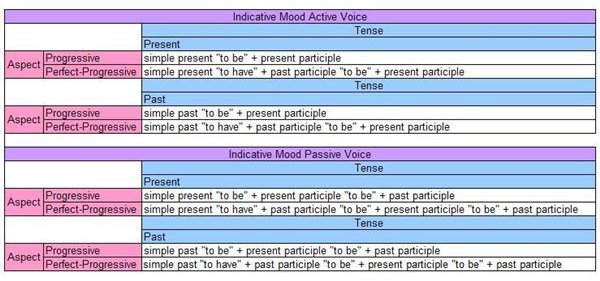General Information and Rules for Pronunciation and Spelling of Present Participles in English
English Present Participles
The present participle is a nonfinite (unconjugated) verb form. In English, the present participle is prototypically used to form the progressive and perfect-progressive aspects:
Present participles can also perform nominal functions, or the grammatical functions prototypically performed by nouns. Traditional grammars use the term gerund for present participles performing nominal functions. The six nominal functions of present participles are:
- Subject
- Subject complement
- Direct object
- Object complement
- Indirect object
- Prepositional complement
The following sections discuss the formation of present participles as well as the spelling changes and pronunciation rules for English present participles.
Present Participles
To form the present participle of most English verbs, the morphological suffix -ing is added to the end of the base form. (Morphemes are the smallest linguistic units with semantic meaning. The morphological suffix -ing signals a verb is in the form of a present participle when suffixed to the base form of a verb.) The base form of an English verb is the infinitive without the preposition to functioning as an infinitive marker. For example:
- Base – Present Participle
- answer – answering
- be – being
- eat – eating
- cook – cooking
- drink – drinking
- help – helping
- read – reading
- worry – worrying
Spelling Changes
For verbs that end with the “silent” letter e, drop the final e and then add the morphological suffix -ing to the end of the verb. For example:
- Base – Present Participle
- achieve – achieving
- become – becoming
- deodorize – deodorizing
- divide – dividing
- invite – inviting
- shake – shaking
- vote – voting
- write – writing
For verbs that end with the letters ie, change the ie to y and then add the morphological suffix -ing to the end of the verb. For example:
- Base – Present Participle
- belie – belying
- die – dying
- lie – lying
- tie – tying
- vie – vying
- untie – untying
For verbs with one syllable that end in a single vowel sound followed by a single consonant (other than w, x, or y), double the final consonant and then add the morphological suffix -ing to the end of the verb. For example:
- Base – Present Participle
- cut – cutting
- get – getting
- hop – hopping
- pet – petting
- put – putting
- run – running
- sit – sitting
- win – winning
For verbs with two syllables in which the second syllable is stressed, double the final consonant and then add the morphological suffix -ing to the end of the verb. For example:
- Base – Present Participle
- admit – admitting
- benefit – benefiting
- commit – committing
- format – formatting
- occur – occurring
- prefer – preferring
- regret – regretting
- rerun – rerunning
For verbs that end with the letter c, add the letter k after the c and then add the morphological suffix -ing to the end of the verb. For example:
- Base – Present Participle
- frolic – frolicking
- mimic - mimicking
- panic – panicking
- picnic – picnicking
- traffic – trafficking
Pronunciation
The morphological suffix -ing is most frequently pronounced as -ing [iŋ] or -in [in] or [In] depending on the dialect of the speaker and the formality of the register. The suffix is also sometimes written as -in’ with an apostrophe that marks the change in sound to indicate a dialectical or informal pronunciation. For example:
- Standard Spelling – Informal Spelling – Formal Pronunciation – Informal Pronunciation
- being – bein’ – [biiŋ] – [biin] or [biIn]
- cutting – cuttin’ – [kәtiŋ] – [kәtin] or [kәtIn]
- dying – dyin’ – [daijiŋ] – [daijin] or [daijIn]
- occurring – occurin’ – [okәriŋ] – [okәrin] or [okәrIn]
- reading – readin’ – [ridiŋ] – [ridin] or [ridIn]
- seeing – seein’ – [siiŋ] – [siin] or [siIn]
- shaking – shakin’ – [šekiŋ] – [šekin] or [šekIn]
- writing – writing’ – [raitiŋ] – [raitin] or [raitIn]
For information on other verb forms in English, please read the article The English Verb System for ESL Students.
For a comparison of the present participles and gerunds in Latin and English, please read the article The Latin Gerund: An English Comparison.
